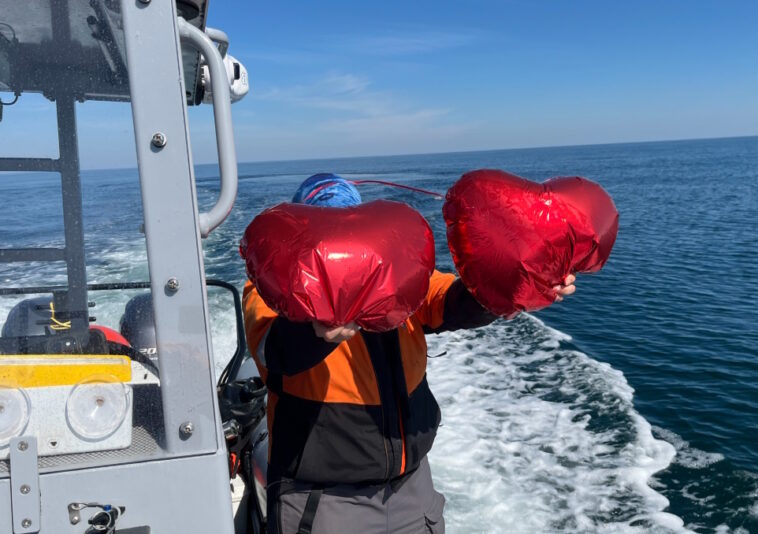DNR Sea Turtle Program Coordinator Mark Dodd posted the video below of a Kemp’s ridley sea turtle thermoregulating on the surface recently during a calm day on the Georgia coast. (For more video, see the full post.)
The warming turtle is a reminder that sea turtle nesting season is on the way. Georgia’s first loggerhead nest of the year is usually reported around the first of May.
Yet Dodd, a senior wildlife biologist with DNR’s Wildlife Conservation Section, also noted a more troubling sight: plastic-film balloons in the ocean. Two of the balloons — often referred to by the brand name Mylar — pulled from the water were likely Valentine’s Day escapees.
Balloons found floating recently off the Georgia coast. (DNR)
Although balloons are often accidentally released, whether the release is intentional or not (Florida banned intentional releases last year), many end up in the ocean. There, they are sometimes mistaken as jellyfish — common prey for sea turtles, including loggerheads, Georgia’s primary nesting sea turtle. Dodd added that the balloons gradually break down into something that looks even more like a jellyfish.

Balloon degraded by saltwater and sun (Mark Dodd/DNR)
Eating balloons can sicken and kill sea turtles, primarily by causing internal blockages. The strings can also entangle turtles and other marine life.
If you think the concern is, well, overblown, consider that on a summer not too long ago two DNR sea turtle technicians collected 247 discarded balloons. On Ossabaw Island alone.
The take-home: Do your part for wildlife. Don’t release balloons.
PS: One of those seasonal techs on Ossabaw Island, Breana Sorg, now works with DNR full-time in conserving sea turtles and other coastal nongame wildlife!




GIPHY App Key not set. Please check settings